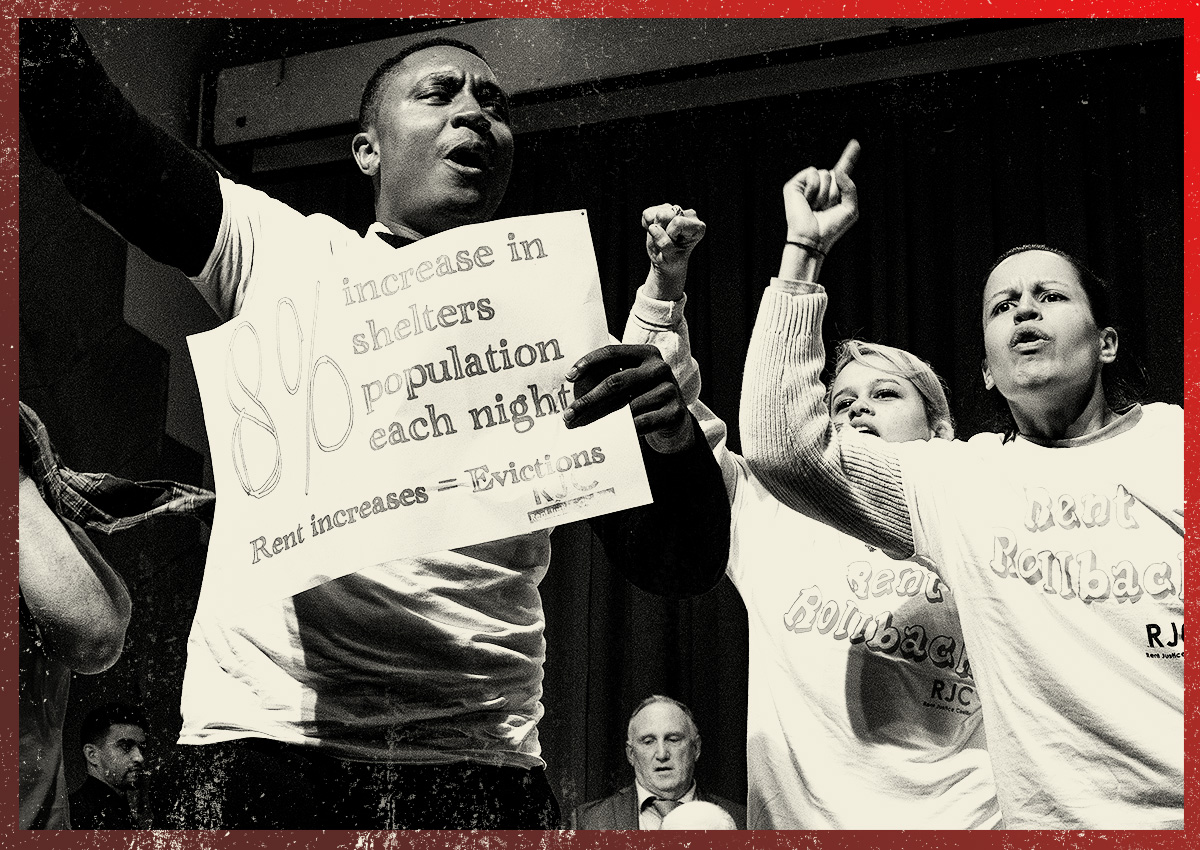A subsidiary of New York Community Bank — the largest lender to New York rent-stabilized landlords — recently filed to foreclose on eight properties belonging to two of them.
The building owners, including one whose family has held the properties since the late 1990s, fell behind on debt payments to Flagstar Bank between February and May and failed to cure the defaults, leading the lender to bring cases in July, court and property records show.
Landlords said the swell is among the first they’ve heard of. Attorneys in the space said they have yet to see a rash of foreclosure filings. But market conditions signal more may be coming.
Industry insiders sounded the alarm on rent-stabilized buildings late last year as interest rates and operating expenses rose much faster than rents.
Brokers said they had begun to offload non-performing assets for underwater owners. Sugar Hill Capital, one of the largest multifamily owners in Northern Manhattan, faced a foreclosure filing on a $16 million mortgage in November.
Since the 2019 rent law blocked most paths to raising stabilized rents by more than a minimal amount, landlords have warned that disinvestment and ultimately distress are inevitable in buildings with few free-market units. Distress might come sooner than expected because expenses such as insurance, utilities and debt service have soared along with borrowing costs.
It’s unclear why Bozhena Basmanov, the long-time landlord of six foreclosed assets in the Bronx, or Silvia Angelopoulos, the owner behind the two foreclosed Brooklyn buildings, missed payments. Neither could be reached for comment.
Court filings show the owners racked up insurance and tax bills and allowed trash and violations to accumulate, leaving their buildings in disrepair.
A recent survey of 3,700 landlord members of the Community Housing Improvement Program found three out of four had cut back on essential building-wide repairs since the new rent law took effect.
Belinda Schwartz, who co-chairs Herrick Feinstein’s real estate practice, said there has been an uptick in banks and debt funds moving to foreclose this year compared to last, but banks’ unwillingness to take back assets may stave off a bevy of foreclosures.
Banks are typically reluctant to repossess assets and the city’s stagnant sales market has driven more lenders to extend-and-pretend on shaky loans, Schwartz said.
It’s possible banks could work with owners to sell struggling assets to a third party or take back the keys in a friendly foreclosure, or a deed-in-lieu of foreclosure.
“It’s unclear, I think, whether there really will be a wave,” Schwartz said.
Owners typically hold any distress close to the chest, said landlord Ann Korchak, a spokesperson for the Small Property Owners of New York. That makes it even more difficult to get a read on distress in the rent-stabilized market.
“With foreclosures, the thing is that people don’t like to talk about them — especially for a family-owned business,” Korchak said.
New York Community Bank recently downplayed an uptick in distress on its balance sheet. In an earnings call last week, CEO Thomas Cangemi said the bank had seen no late payments or delinquencies on multifamily.
“They’re paying their bills,” Cangemi said of landlord borrowers. “These are wealthy customers that have large portfolios and they’re weathering the storm.”
Landlords on Twitter scoffed at the characterization.
“Invite him to a SPONY meeting so he can meet real housing providers,” Korchak sniffed.
“I’m beginning to think banks spin the truth like brokers in this industry,” CHIP’s Jay Martin wrote.
The bank’s quarterly report showed a 154 percent jump in multifamily debt 90 days or more past due since the first quarter.
Repossessed assets, which included commercial and residential real estate, were flat at $13 million.
But the bank, which did not return a request for comment, also increased its allowance for credit losses — debt unlikely to be recovered — by 8 percent from the previous quarter. That signals it expects more distress.
Read more



